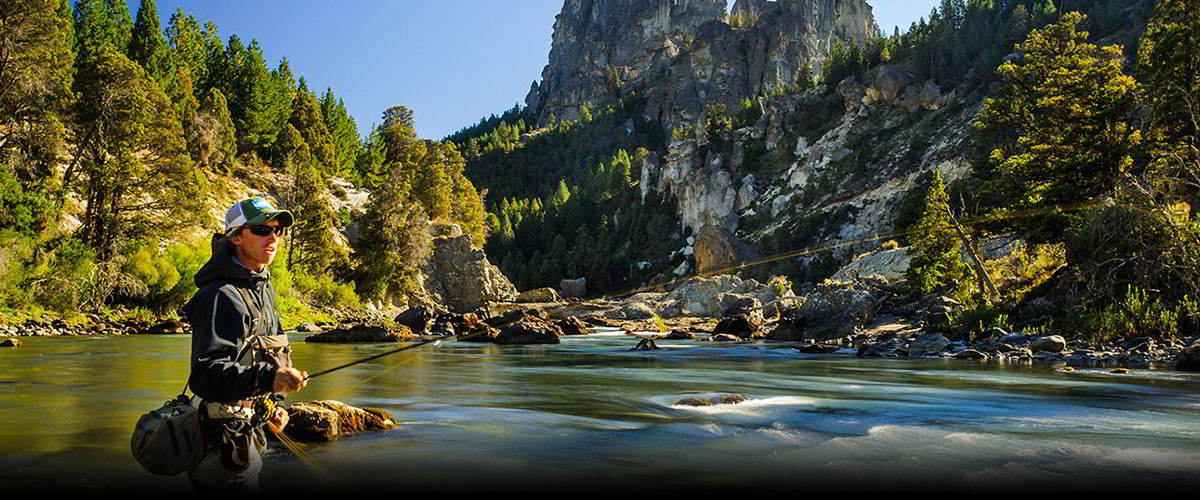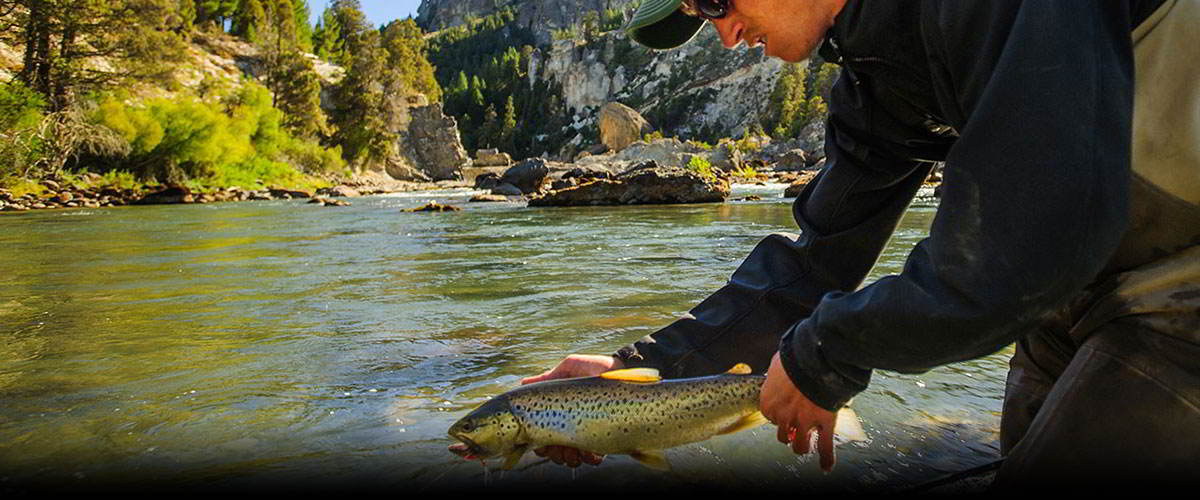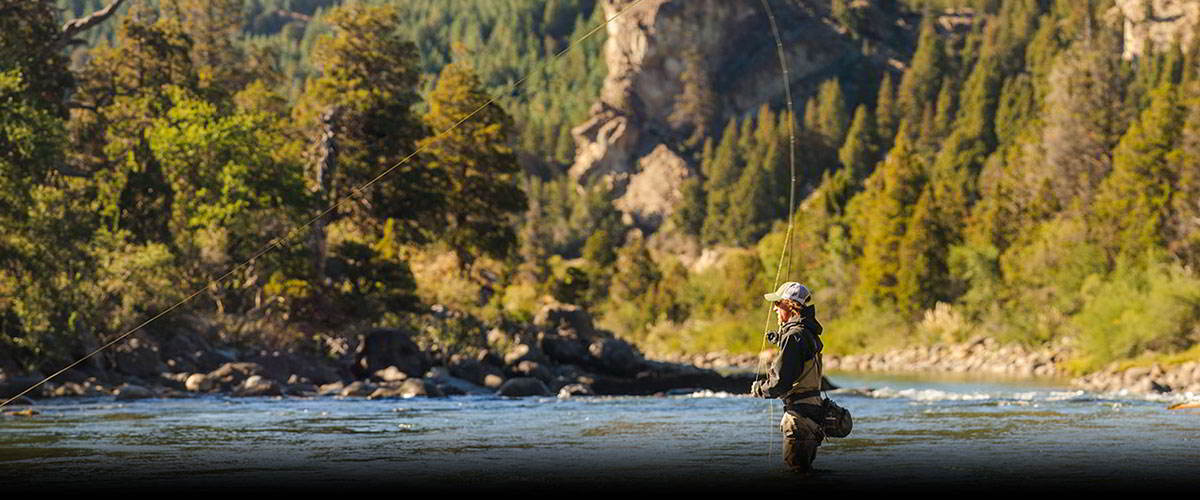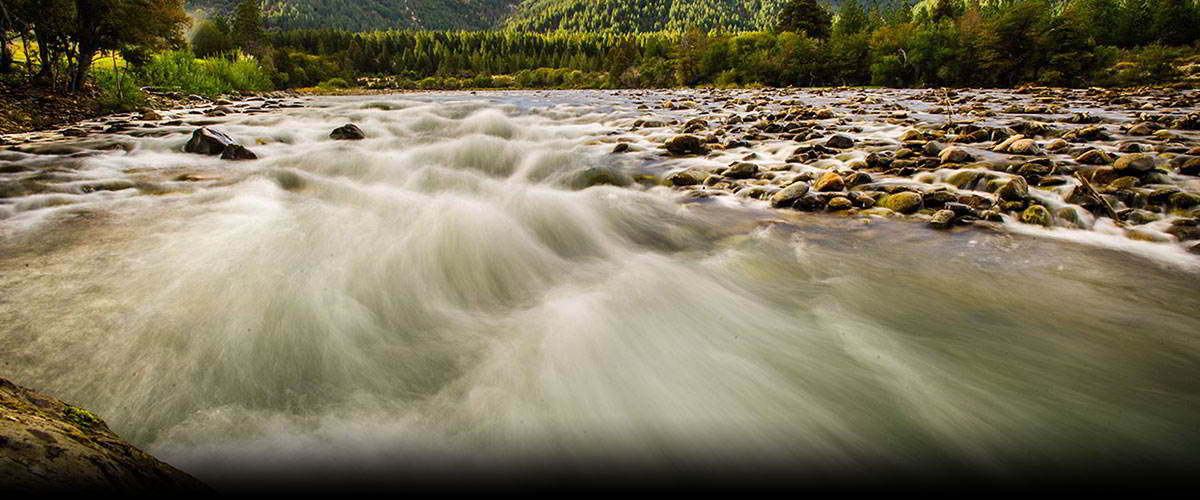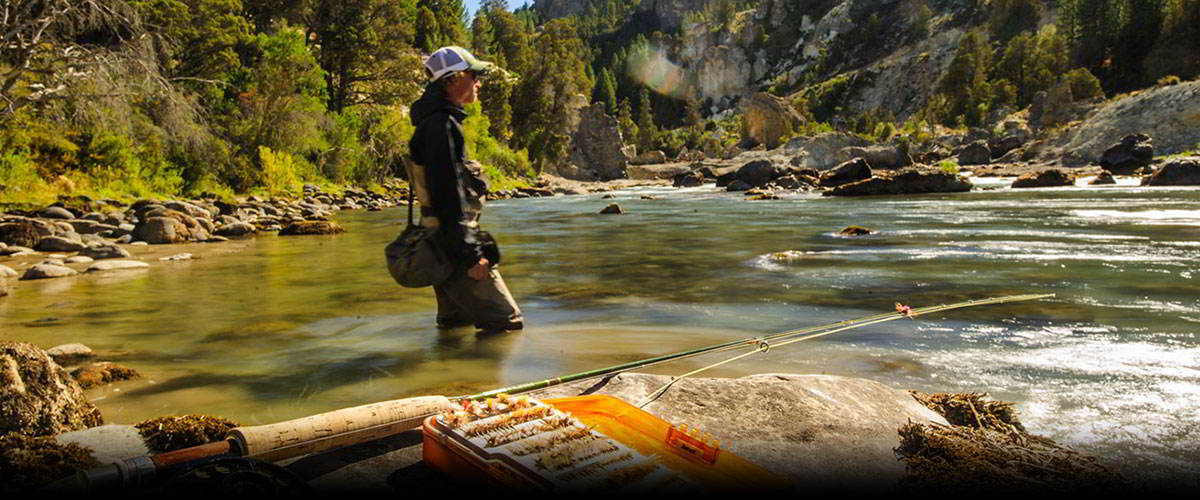Features
Since its early beginnings, Argentine Patagonia –and more specifically San Martin de los Andes- has become one of the best fly fishing centres in the world. And no wonder.
This beautiful Andean location is home to a great number of fisheries (rivers, lakes, ponds, streams, dams, etc) where excellent species can be found. The waters of this region provide the healthiest habitat for fish.
The Caleufu River
The Meliquina and Filo Hua Hum rivers join to create the Caleufu River, the banks of which offer the beauty of the surrounding landscape.
“Upstream Caleufu” provides different side accesses such as Casa de Piedra and Los Alamos highly recommendable to start your fishing trip. The last stretch is impossible to wade since the only access is through private property up to its mouth at Piedra del Aguila dam, at the end of the Colon Cura River, worldwide known as El Monolito or Puente Viejo.
Patagonian rivers contain stone beds with a big amount of algae and moss, which is troublesome without the necessary gear and you might slip and get wetter than your flies. For this reason, and because of the water´s low temperatures, the use of waders and nonslip felt-sole boots is advisable. Some boots are provided with studs for a better grip.
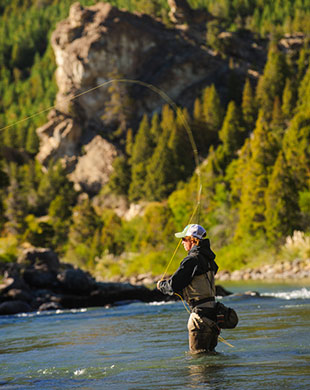 Images: Eliseo Micciu - Copyright
Images: Eliseo Micciu - Copyright
Species
Rainbow Trout
Rainbow trouts have distinctive silvery sides, with a pinkish stripe from the gill to the tail and black spots along their backs. Their mandibles and bellies are pearly white. They were introduced to Argentina in 1903 and are highly adaptable to their habitat due to their resistance to temperatures over 20°.
Many anglers consider the rainbow trout the hardest-fighting trout species, and is known for leaping high when hooked and putting up a powerful struggle.
They are predators with a varied diet and will eat nearly anything they can capture –insects, smaller fish, cigar ends, twigs, etc. They are also very much sought by breeders due to their easy manipulation and adaptability to different environments and artificial food.
Brown Trout
Brown trouts are tawny to olive brown dorsally to mid side, often with a brassy appearance. Sides grade from tan to yellow. Their back and sides are marked with olive brown to black spots. Their undersides, including the lower jaw, are white to pearl. The dorsal fin in typically yellow-olive, marked with brown to black spots.
Their diet is very similar to that of the rainbow trout and In heavily fished waters, they may become increasingly wary and nocturnal and very selective in which food items they will and will not respond to.
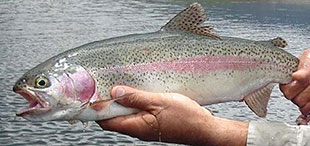 Rainbow Trout
Rainbow Trout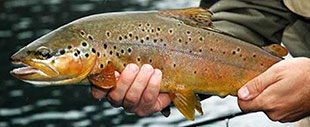 Brown Trout
Brown Trout

